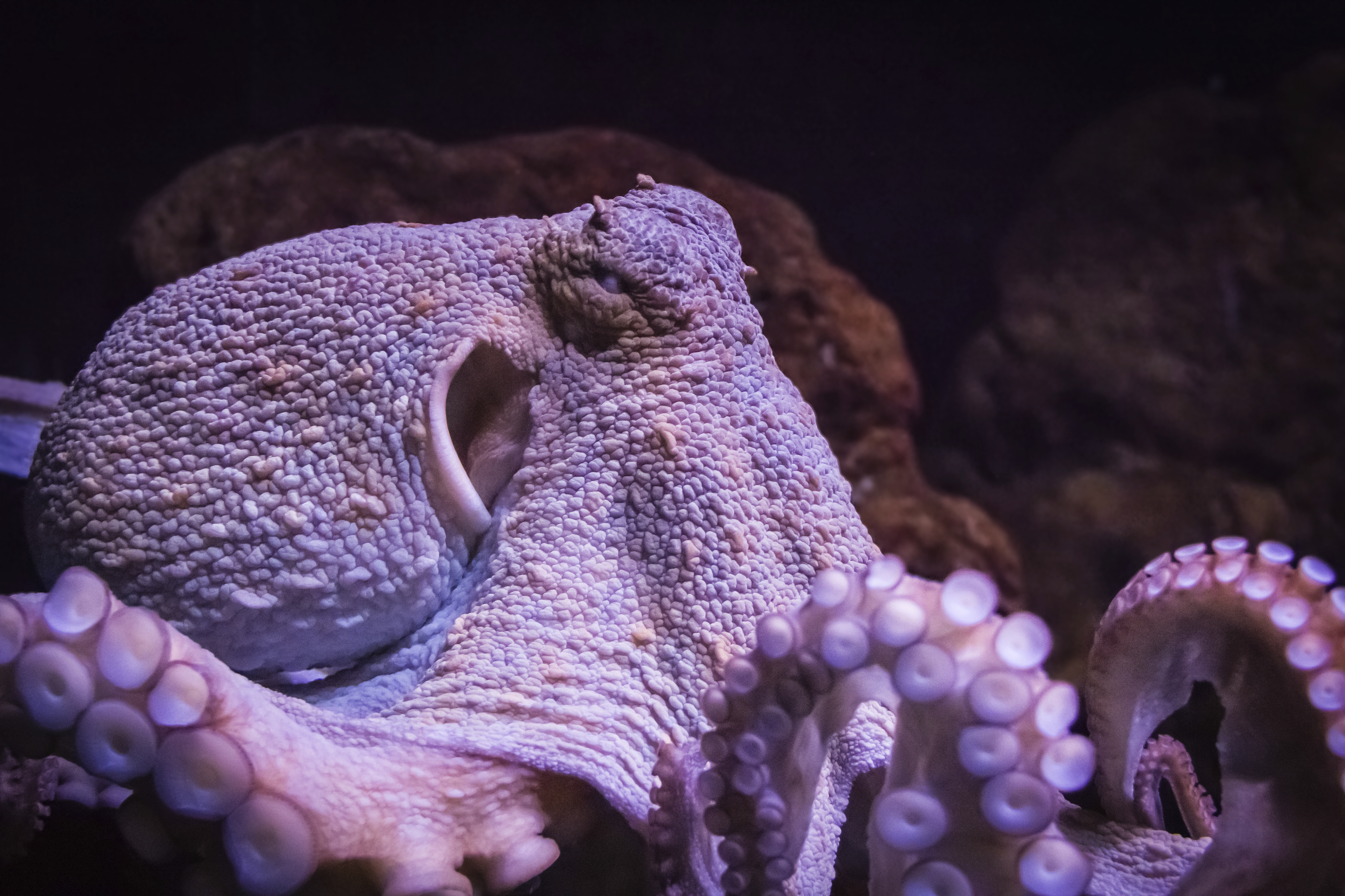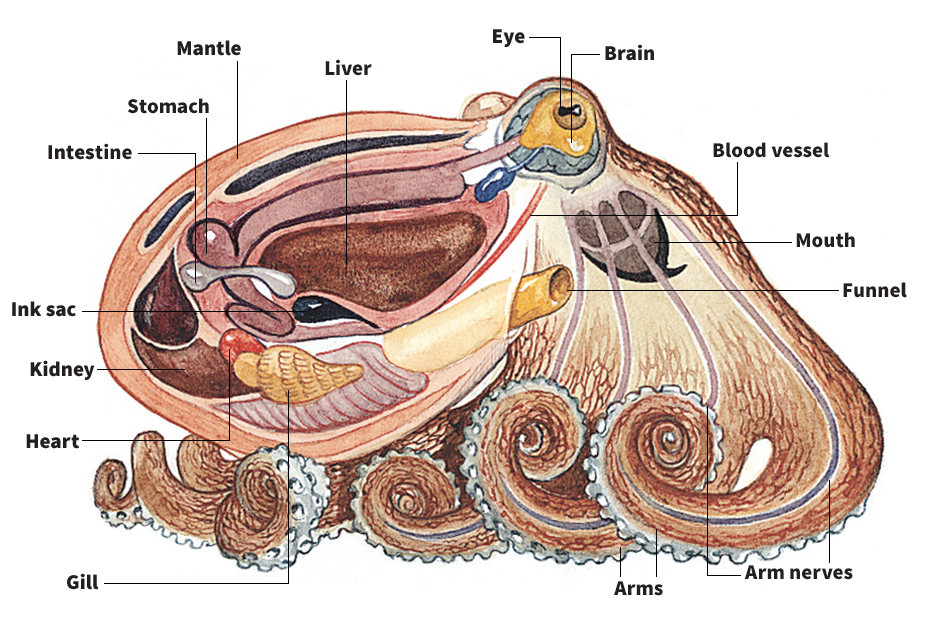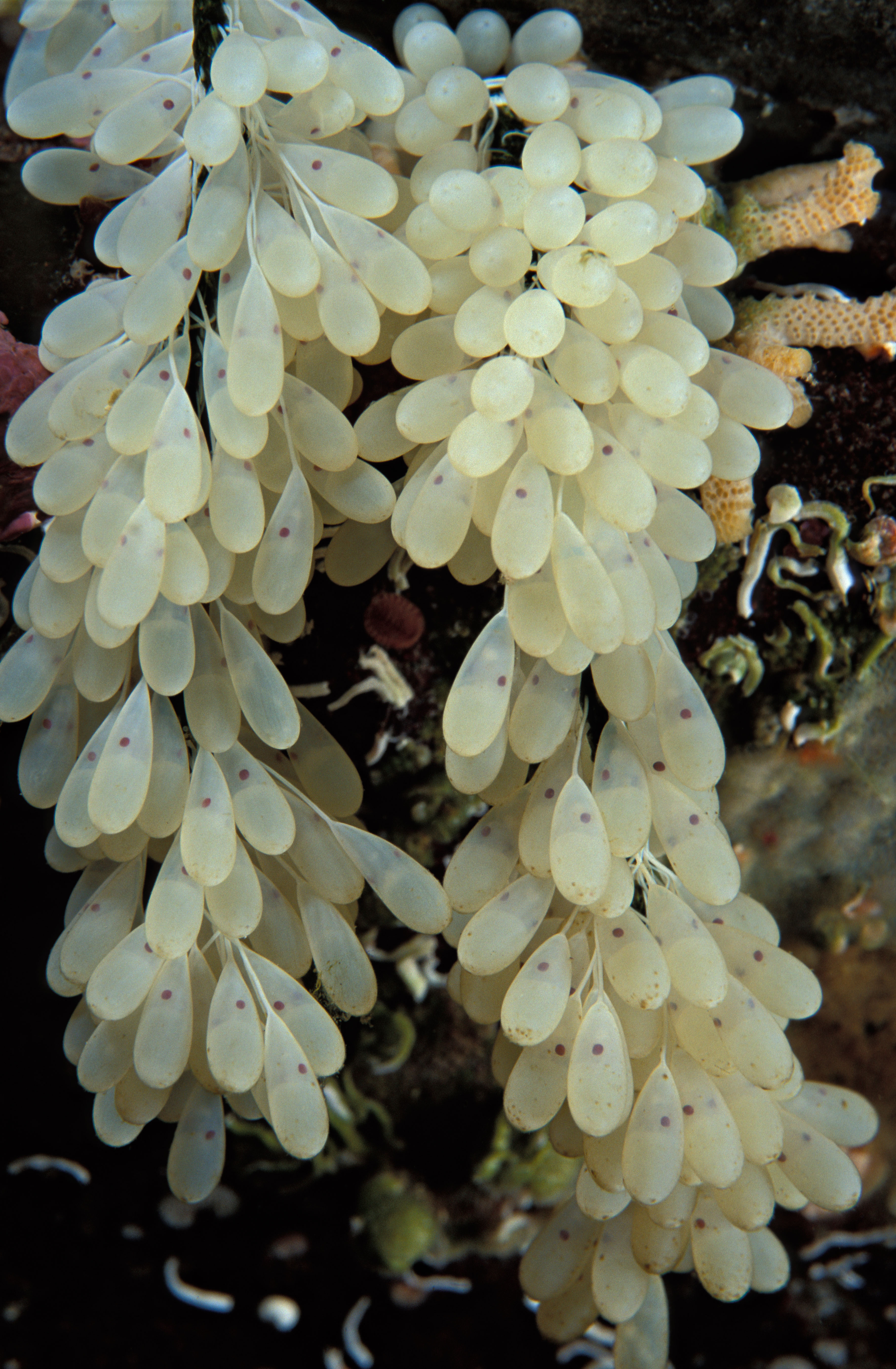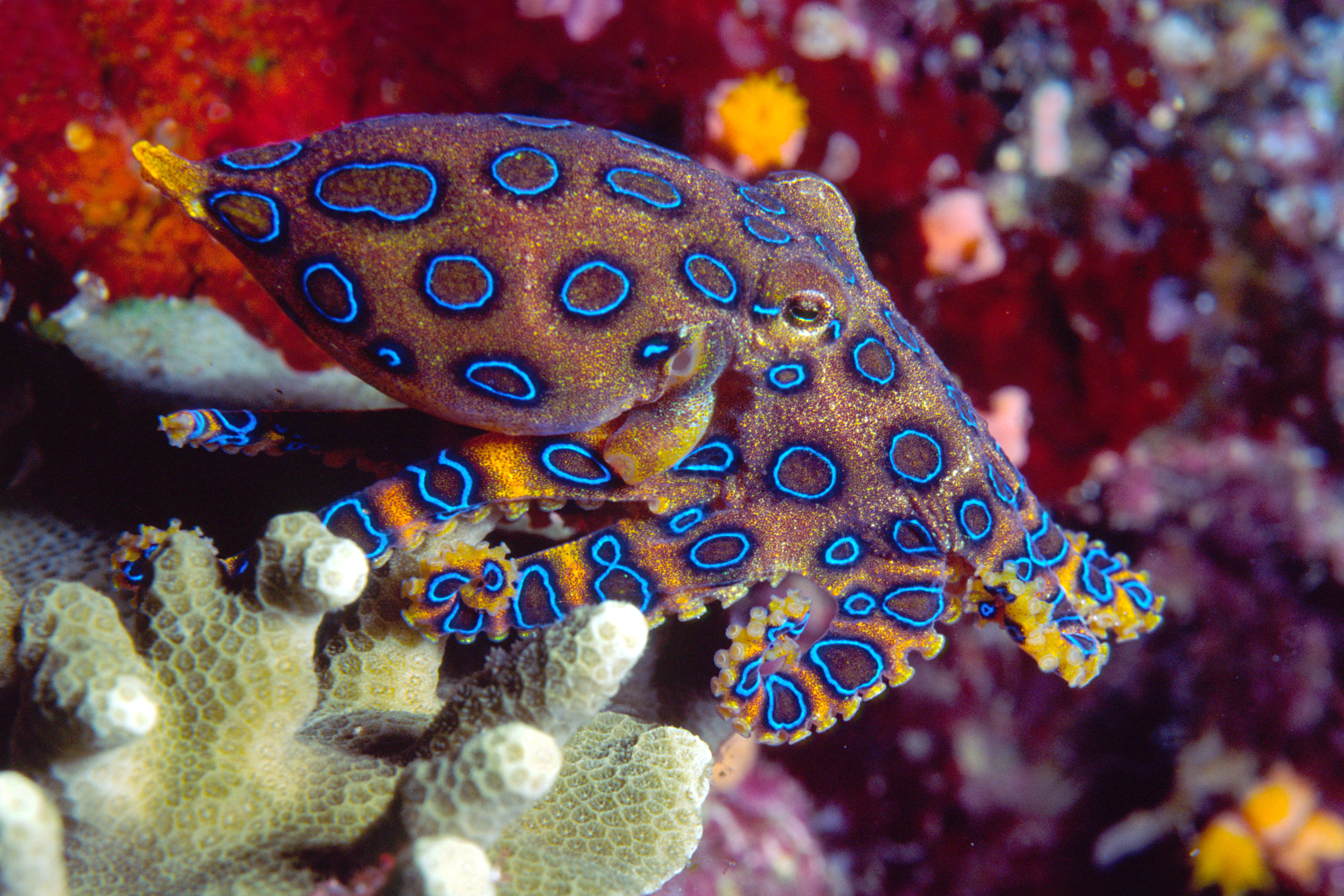Octopus is any of a group of sea animals with a rounded body, large eyes, and eight long arms. The best-known species (kinds) of octopuses inhabit rocky, sandy, or muddy bottoms in shallow parts of oceans worldwide. Many octopuses live in deep waters. Some kinds are pelagic, inhabiting the water of open oceans.

Common octopus
Octopuses vary greatly in size. The largest species, the North Pacific giant octopus of the Pacific Ocean, can weigh up to 150 pounds (68 kilograms). It measures more than 20 feet (6 meters) from the tip of one arm to the tip of another on the opposite side of the body. The smallest species, found in the Indian Ocean, weighs less than 1 ounce (28 grams) and measures about 1 inch (2.5 centimeters) from arm tip to arm tip.
Octopuses belong to a large group of animals called mollusks. This group also includes clams, oysters, and snails. Like squids and cuttlefish, octopuses are mollusks that have no external shell or skeleton.
The body of an octopus
is soft and boneless. A fleshy, muscular covering called the mantle surrounds the main part of the body, forming a cavity that encloses the gills. An octopus breathes by drawing water into the mantle cavity. The circulation of water provides oxygen for the gills. The mantle then contracts and forces the water out through a tube called the funnel or siphon. Octopuses have a main systemic heart and two additional branchial hearts. The branchial hearts supply blood to the animal’s gills.

Octopuses have good vision. The animal’s two large eyes lie on each side of the creature’s head.
Eight arms extend from the head of an octopus. At their base, the arms are united by a membrane web. Round, muscular suckers line the underside of each arm. An octopus uses its arms and suckers to move along the ocean bottom and capture prey. The suckers can provide enormous suction, enabling the octopus to attach firmly to rocks and prey. If an octopus loses an arm, a new one grows in its place. Octopuses have a beaklike mouth below the head at the base of the arms.
Loading the player...Octopus swimming
The life of an octopus.
Octopuses feed chiefly on clams, crabs, and snails. Many species also eat fish and even other octopuses. Certain octopuses can make a hole in the shells of clams, crabs, or snails and then inject a poison that paralyzes the animals.
Many sea animals—especially seals, whales, and certain fish—prey on octopuses. An octopus has various means of avoiding predators. It can swim quickly backward by forcing a powerful jet of water through its funnel. The octopus may conceal itself by discharging a cloud of inky fluid. In some cases, the shape of the ink cloud resembles the octopus and thus acts as a decoy.
Loading the player...Octopus
In addition, an octopus can escape danger by rapidly changing colors. Its skin contains cells called chromatophores, each of which contains a single-colored pigment. Sudden contractions of muscles surrounding the chromatophores can produce the animal’s rapid color changes. These color changes may startle a predator or enable the octopus to blend with its surroundings. Octopuses also may use color changes to communicate with one another and as a courtship display.
Octopuses reproduce sexually. In some species, females can lay more than 100,000 eggs. A female octopus cares for the eggs until they hatch into tiny, immature octopuses. The young swim at or near the surface of the water for several weeks as part of plankton. Many of the young are eaten by fish and other marine animals. In most octopus species, the remaining young descend to the ocean bottom and develop into adults. In a few pelagic octopuses, the young never become bottom dwellers.
Octopuses have short lives. Many live one year or less. The largest species live about three years.

Octopuses and people.

Most octopuses are not dangerous to human beings. However, octopuses sometimes bite, so use caution when handling them. The small blue-ringed octopuses of Australia have a venom that can kill people. In some countries, octopus is an important food. Octopus fisheries operate in many regions, most notably off Japan, in the Mediterranean, and off the northwest coast of Africa.
